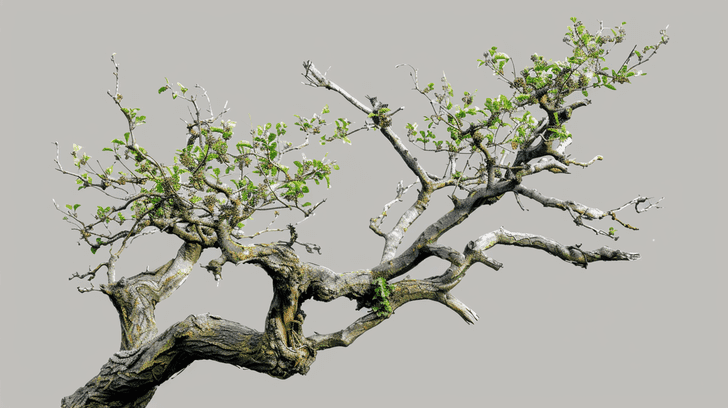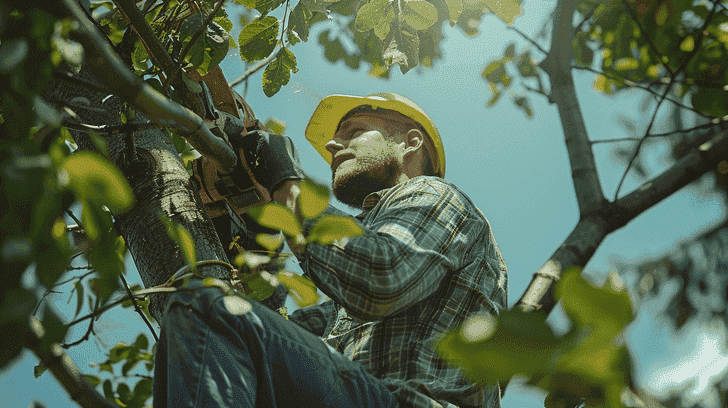Magnolia Tree Trimming: Expert Pruning Techniques for Healthy Blooms
As you gaze upon your majestic magnolia tree, you can’t help but wonder how to coax it into producing those stunning, show-stopping blooms.
The secret lies in expert pruning techniques, an essential aspect of magnolia tree trimming.
By mastering the art of pruning, you’ll not only promote healthy growth but also encourage vibrant blooms to flourish.
But where do you start? From identifying the right branches to cut to timing your pruning just right, there’s more to it than meets the eye.
Get ready to uncover the expert techniques that will take your magnolia tree to the next level.
How to trim an overgrown magnolia tree
To trim an overgrown magnolia tree, it’s crucial to start by evaluating its overall shape and identifying the main branches that need to be reduced or removed to restore a balanced, symmetrical appearance.
You’ll want to focus on branches that are crossing, rubbing, or growing inward, as these can cause damage and hinder growth. Using clean, sharp pruning tools, carefully cut these branches at the trunk or a lateral branch, making a clean cut just above a growth node.
When magnolia trimming, precision cuts are vital to promote healthy growth and prevent disease. Remove any weak or dead branches, and thin out the center of the tree to allow for better air circulation and sunlight penetration.
Topping a magnolia tree
When topping a magnolia tree, you’re reducing its height by cutting back the central leader or main trunk, a practice that, while sometimes necessary, can be detrimental to the tree’s health if not done properly.
Improper topping can lead to stress, decay, and even tree death.
To top your magnolia tree safely, make a clean cut just above a lateral branch or a dormant bud, using a sharp, sterile tool. This will help the tree heal quickly and reduce the risk of disease.
Magnolia trimming tool
With the right magnolia trimming tool in hand, you’ll be better equipped to tackle pruning and shaping tasks with precision and confidence.
When it comes to pruning, having the correct tools is essential. Invest in a high-quality pair of bypass pruners, loppers, and a pruning saw. These tools will allow you to make clean cuts, reducing the risk of damage to your magnolia tree.
For thicker branches, use loppers or a pruning saw to make precise cuts. Remember to disinfect your tools between cuts to prevent the spread of disease.
How to Prepare for Pruning a Magnolia Tree?
Before you start pruning, inspect your magnolia tree to identify dead, diseased, or damaged branches that need attention.
This important step guarantees you’re targeting the right areas for magnolia pruning.
Take note of any signs of decay, cracks, or cankers, as these can spread disease to healthy parts of the tree.
To prepare for pruning, make sure you have the following:
- Clean and sharp pruning tools, such as loppers, hand pruners, and a pruning saw, to prevent spreading diseases.
- A clear understanding of your tree’s structure, including the location of its leader branch and any crossing branches.
- A magnolia pruning plan, outlining which branches to remove or cut back to promote healthy growth and blooming.
When to Prune a Magnolia Tree?
You’re now ready to determine the best time for pruning your magnolia tree, as improper timing can negatively impact its growth and blooming.
Generally, the ideal time to prune a magnolia tree is during its dormant season, typically from late winter to early spring, before new growth begins.
Pruning during this period minimizes the risk of disease and promotes healthy growth.
Avoid pruning in the fall, as this can stimulate new growth that may not have time to harden off before winter, making the tree more vulnerable to damage.
Prune your tree when it’s not stressed or under environmental stress, ensuring a successful pruning process that promotes healthy blooms.
How to Prune a Magnolia Tree
To prune your magnolia tree effectively, identify the branches that require removal, taking care to distinguish between live and dead wood.
You’ll want to remove any dead, diseased, or damaged branches to prevent the spread of disease and encourage healthy growth.
When pruning, follow these steps:
- Cut outside the branch collar: This is the raised area where the branch meets the trunk. Cutting outside the collar helps the tree heal quickly.
- Make clean cuts: Trim branches at a 45-degree angle, about 1/4 inch above a growth node. This promotes healthy callus formation.
- Trim, don’t tear: Use sharp, clean pruning tools to make precise cuts, rather than tearing the branch off. This reduces damage to the tree.
Techniques for Pruning Young Magnolias
Pruning young magnolias requires a gentle, formative approach to encourage a strong, balanced structure that will support the tree’s future growth.
When pruning young magnolias, you’ll want to focus on shaping the tree’s framework, promoting a central leader, and removing any weak or damaged branches.
Use hand pruners or loppers to remove any crossing or rubbing branches, as these can cause damage and create entry points for disease.
Make clean cuts just above a bud or lateral branch, using a 45-degree angle to prevent water from collecting.
Prune your young magnolia in late winter or early spring, before new growth begins, to minimize stress and promote healthy development.
FAQ
Should you trim the lower branches of a Southern Magnolia tree?
You’ll often wonder whether trimming the lower branches of your Southern Magnolia tree is necessary to maintain its appearance and promote healthy growth.
The answer is yes, and here’s why:
Trimming lower branches serves three key purposes:
- Improved air circulation: Removing lower branches allows air to circulate freely, reducing the risk of fungal diseases that thrive in humid environments.
- Enhanced aesthetics: Trimming lower branches creates a clean, visually appealing silhouette, making your tree a stunning centerpiece in your landscape.
- Increased sunlight penetration: By removing lower branches, you allow more sunlight to reach the inner branches, promoting healthy growth and encouraging blooming.
Can a magnolia tree be topped off?
Topping off a magnolia tree isn’t recommended. This practice involves cutting the main stem or leader, which can cause significant stress to the tree.
As a result, you may notice a decrease in blooming, weak growth, and increased susceptibility to disease. Additionally, topping can lead to the formation of weak, upright shoots that can create a ‘witch’s broom’ effect, further weakening the tree.
Instead, opt for regular pruning and training to maintain a healthy, balanced shape that promotes robust growth and abundant blooms.
Should you deadhead magnolia blooms?
Deadheading magnolia blooms can greatly enhance the tree’s appearance and overall health.
As a responsible magnolia tree owner, you might wonder if deadheading is necessary.
The answer is yes! By removing spent blooms, you encourage the tree to focus its energy on producing new flowers and foliage instead of seed production.
Here are three reasons to deadhead your magnolia blooms:
- Promotes reblooming: Deadheading stimulates the tree to produce more flowers, resulting in a longer blooming period.
- Encourages healthy growth: By redirecting energy from seed production to foliage growth, you’ll see a more robust and lush tree.
- Maintains aesthetics: Deadheading keeps your tree looking its best, removing wilted flowers and preventing seed pods from forming.
Can I prune a magnolia tree in winter?
While it’s technically possible to prune a magnolia in winter, it’s not the most ideal time.
Pruning during the dormant season can cause new growth, which may not have time to harden off before the next winter, making it more susceptible to damage.
Additionally, winter pruning can reduce the tree’s energy reserves, potentially affecting its ability to produce blooms in the spring.
It’s generally recommended to prune your magnolia in late spring or early summer, after the blooming period, to minimize the risk of damage and promote healthy growth.
Will a magnolia tree grow back after being cut down?
Cutting down a magnolia tree doesn’t necessarily mean it’s gone for good, as you’re likely wondering if it will grow back from the stump or roots.
The answer depends on several factors. If the tree is cut down to the ground, it’s possible for new shoots to emerge from the stump.
However, the success of regrowth depends on the tree’s species, age, and health prior to cutting.
Here are some key considerations:
- Species: Some magnolia species, like the Southern magnolia, are more likely to regrow from the stump than others.
- Stump height: Leaving a higher stump (around 1-2 feet) can increase the chances of regrowth.
- Root system: If the roots are intact and healthy, they can support new growth.
Keep in mind that even if the tree grows back, its structure and appearance may be affected.
Can you prune a magnolia tree to keep it small?
While magnolia trees can regrow from stumps, pruning them regularly can help maintain a desired size and shape, a particularly important consideration for gardeners who want to keep their magnolia trees compact.
By pruning, you can control the tree’s height and spread, making it suitable for smaller gardens or urban spaces.
| Pruning Technique | Effect on Tree Size |
| Reduce branch length | Reduces overall tree height and width |
| Remove lower branches | Raises the canopy, making the tree more compact |
| Thin out the canopy | Allows air and light to reach inner branches, promoting healthy growth |







